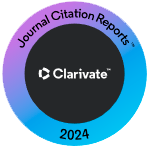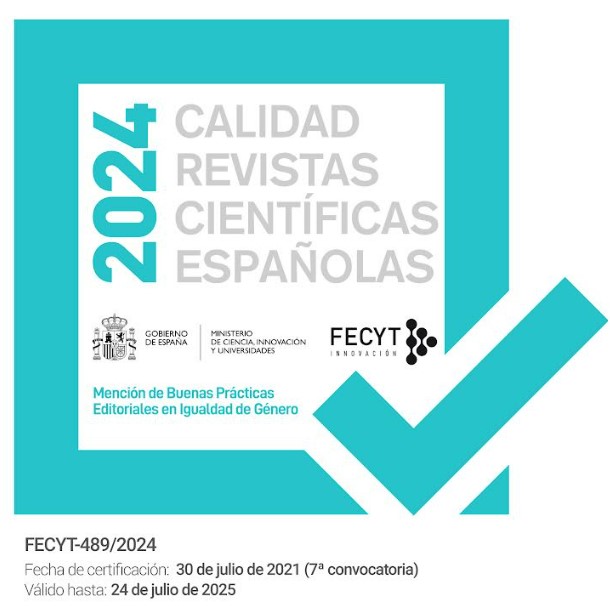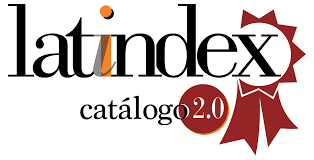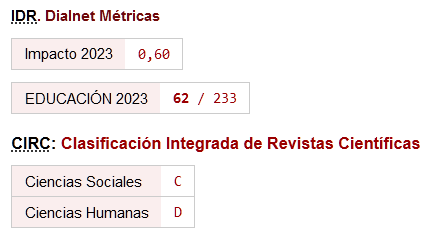The Interplay of Critical Thinking Explicit Instruction, Academic Writing Performance, Critical Thinking Ability, and Critical Thinking Dispositions: An Experimental Study
DOI:
https://doi.org/10.46661/ijeri.4594Keywords:
Academic Writing Performance, Critical Thinking Dispositions Inventory, Critical Thinking Explicit Instruction, Ennis-Weir Critical Thinking Essay TestAbstract
The present study intended to investigate the interplay of critical thinking explicit instruction, academic writing performance, critical thinking ability, and critical thinking dispositions of Iranian students. To this end, 140 students of Jahrom University of Medical Sciences (73 males and 67 females) were selected. They were divided into the experimental and the control groups. Both groups received instruction in academic writing course for 15 weeks 3 hours per week. The students in both groups were administered pre- and post-instruction tests in order to examine the effectiveness of the instruction. Three instruments were utilized in this study including, the researcher-developed essay test, the Ennis-Weir Critical Thinking Essay Test, and the California Critical Thinking Dispositions Inventory (CCTDI). Descriptive statistics and independent-samples t-test were used to analyze the data. The results indicated that there were statistically significant differences between the mean scores of the experimental and the control groups. The results also showed that some CCTDI subscales were not significantly different at the posttest such as, truth-seeking, cognitive maturity, and open- mindedness, whereas the mean posttest scores of other CCTDI subscales were significantly different such as, analyticity, CT inquisitiveness, CT self-confidence, and systematicity. The experimental group had a higher score in the academic writing test compared with the control group. Changes in students’ critical thinking ability, academic writing performance, and their critical thinking dispositions suggest that the CT techniques have been fruitful, and more efforts should be made to integrate the explicit instruction in critical thinking into academic courses.
Downloads
References
Abrami, P. C., Bernard, R. M., Borokhovski, E., Wade, A., Surkes, M. A., Tamim, R., & Zhang, D. (2008). Instructional interventions affecting critical thinking skills and dispositions: A stage 1 meta-analysis. Review of Educational Research, 78(4), 1102-1134.
American Philosophical Association [APA] (1990). Critical Thinking: A Statement of Expert Consensus for Purposes of Educational Assessment and Instruction, The Delphi Report: Research Findings and Recommendations Prepared for the Committee on Pre-College Philosophy. P. Facione, (Project Director). ERIC Doc. No. ED 315-423.
Bartlett, F.C. (1958). Thinking: An experimental and social study. London: Unwin University Books.
Beyer, B. K. (1985). Teaching critical thinking: A direct approach. Social Education, 49(4), 297-303.
Bloom, B.S. (1956). Taxonomy of educational objectives: Classification of educational goals. New York: Longmans, Green.
Case, R. (2005). Moving critical thinking to the main stage. Education Canada, 45(2), 45-49.
Chaffee, J., McMahon, C. & Stout, B. (2002). Critical thinking thoughtful writing. New York: Houghton Mifflin.
Clark, D. (2004). Is professional writing relevant? A model for action research. Technical Communication Quarterly, 13(3), 307-323.
Condon, W., & Kelly-Riley, D. (2004). Assessing and teaching what we value: The relationship between college-level writing and critical thinking abilities. Assessing Writing, 9(1), 56-75.
Coughlin, E. (2010). High schools at a crossroads. Educational Leadership, 67(7), 48-60.
Dewey, J. (1933a). How we think: A restatement of the relation of reflective thinking to the educative process. Chicago: Henry Regnery.
Ennis, R. H. (1985). Critical thinking and the curriculum. National Forum, 65(1), 28-31.
Ennis, R. H. (1987). A taxonomy of critical thinking dispositions and abilities. In J. B. Baron & R. J. Sternberg (Eds.), Teaching Thinking Skills. Theory and Practice (pp. 9-26). N. York: W. H. Freeman and Company.
Ennis, R. H. (2005). Supplement to the test/manual entitled he Ennis-Weir critical thinking essay test. Urbana, IL: The Illinois Critical Thinking Project.
Ennis, R. H., & Weir, E. E. (1985). The Ennis-Weir critical thinking essay test: An instrument for teaching and testing. Midwest Publications.
Facione, N. C., & Facione, P. A. (1997). Critical thinking assessment in nursing education programs: An aggregate data analysis. Millbrae: California Academic Press.
Facione, P. A. (1990). Critical thinking: A statement of expert consensus for purposes of educational assessment and instruction. Millbrae, CA: The California Academic Press.
Facione, P. A. (2000). The disposition toward critical thinking: Its character, measurement, and relationship to critical thinking skill. Informal logic, 20(1), 61-84.
Facione, P. A., Sanchez, C. A., Facione, N. C., & Gainen, J. (1995). The disposition toward critical thinking. The Journal of General Education, 44(1), 1-25.
Fasko, D. (2003). Critical thinking: origins, historical development, future direction. In D. Fasko (Ed.), Critical thinking and reasoning: Current research, theory and practice (pp.3-20). Cresskill, NJ: Hampton Press.
Gilhooly, K. (1996). Thinking: Directive, undirected, and creative. Amsterdam: Academic Press.
Halonen, J. S. (1995). Demystifying critical thinking. Teaching of psychology, 22(1), 75-81.
Halpern, D. F. (1998). Teaching critical thinking for transfer across domains. American Psychologist, 53(4), 449-455.
Halpern, D. F. (2007). The nature and nurture of critical thinking. In R. J. Sternberg, H. L. Roediger III, & D. F. Halpern (Eds.), Critical thinking in psychology (pp. 1-14). New York, NY, US: Cambridge University Press.
Hinkel, E. (2003). Teaching academic ESL writing: Practical techniques in vocabulary and grammar. New York: Routledge.
Jones, P. J., & Haydon, D. (Eds.). (2012). Putting it into practice: Developing student critical thinking skills in teacher education. Charlotte, NC: Information Age.
Kennedy, M., Fisher, M. B., & Ennis, R. H. (1991). Critical thinking: Literature review and needed research. Educational Values and Cognitive Instruction, 15 (3). 111-126.
King, A. (1994). Inquiry as a tool in critical thinking. In D. F. Halpern (Ed.), Changing college classrooms: New teaching and learning strategies for an increasingly complex world (pp. 13-38). San Francisco: Jossey-Bass.
Kurfiss, J. (1988). Critical thinking: Theory, research, practice and possibilities. Washington: Higher Education.
Lewis, A., & Smith, D. (1993). Defining higher order thinking. Theory into Practice, 32(3), 131-137.
Lipman, M. (1988). Critical thinking: What can it be? Educational Leadership, 46(1), 38-43.
Lipman, M. (2003). Thinking in education. Cambridge: Cambridge University Press.
McPeck, J. (1981). Critical thinking and education. New York: St. Martin's.
Mirman, J., & Tishman, S. (1988). Infusing thinking through connections. Educational Leadership, 45(7), 64-65.
Paul, R. & Elder, L. (2007). Critical thinking: The art of Socratic questioning. Journal of Developmental Education, 31(1), 36-37.
Paul, R. (1985). The critical thinking movement. National Forum, 65(1), 23-32.
Paul, R. (1992). Critical thinking: What, why, and how. New directions for community colleges, 92(77), 3-24.
Paul, R. and Elder, L. (2008). The miniature guide to critical thinking concepts and tools. Dillon Beach: Foundation for Critical Thinking Press.
Paul, R., & Elder, L. (2001). Critical thinking: Tools for taking charge of your learning and your life. Upper Saddle River, NJ: Prentice Hall.
Pescatore, C. (2007). Current events as empowering literacy: For English and social studies teachers. Journal of Adolescent & Adult Literacy, 51(4), 326-339.
Quitadamo, I. J., & Kurtz, M. J. (2007). Learning to improve: using writing to increase critical thinking performance in general education biology. CBE-Life Sciences Education, 6(2), 140-154.
Ramsden, P., & Moses, I. (1992). Associations between research and teaching in Australian higher education. Higher Education, 23(3), 273-295.
Reed, J. H. (1998). Effect of a model for critical thinking on students' achievement in primary source document analysis (PhD dissertation). University of south Florida, The United States.
Reed, J. H. (1998). Effect of a model for critical thinking on students' achievement in primary source document analysis (PhD dissertation). University of south Florida, The United States.
Scanlan, J.S. (2006). The effects of Richard Paul’s universal elements and standards of reasoning on twelfth grade composition (Master’s thesis). Alliant International University, USA.
Sims, M. (2014). The write stuff: Thinking through essays. USA: Pearson Prentice Hall.
Steele, C. M. (1997). A threat in the air: How stereotypes shape intellectual identity and performance. American Psychologist, 52(6),613-629.
Sternberg, R. J. (1986). Critical thinking: Its nature, measurement, and improvement. Washington, D. C.: National Institute of Education.
Tsui, L. (2002). Fostering critical thinking through effective pedagogy: Evidence from four institutional case studies. The Journal of Higher Education, 73(6), 740-763.
Willingham, D. T. (2008). Critical thinking: Why is it so hard to teach? Arts Education Policy Review, 109(4), 21-32.
Worrell, J. A., & Profetto-McGrath, J. (2007). Critical thinking as an outcome of context-based learning among post RN students: A literature review. Nurse Education Today, 27(5), 420-426.
Downloads
Published
How to Cite
Issue
Section
License
Copyright (c) 2020 Creative Commons 4.0

This work is licensed under a Creative Commons Attribution-NonCommercial-NoDerivatives 4.0 International License.












